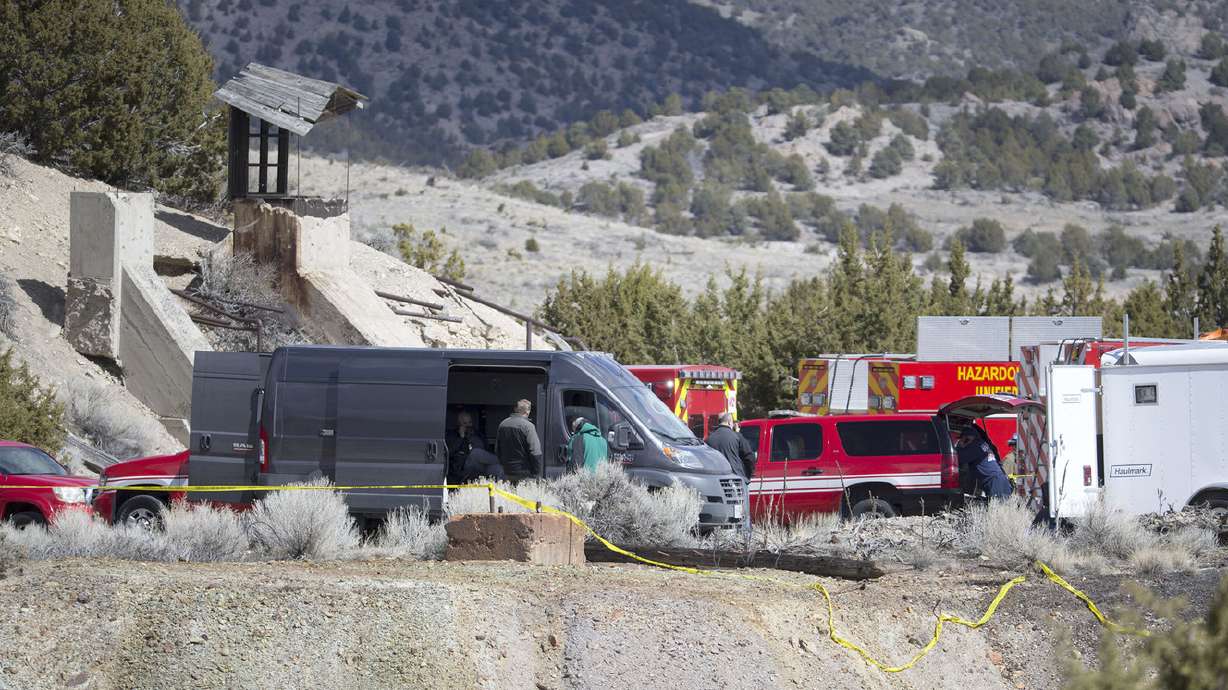Estimated read time: 3-4 minutes
This archived news story is available only for your personal, non-commercial use. Information in the story may be outdated or superseded by additional information. Reading or replaying the story in its archived form does not constitute a republication of the story.
EUREKA, Juab County — When authorities determined there were two bodies inside an abandoned mine late last month — likely the remains of two missing teens — they called for the Unified Fire Authority's help in retrieving them.
The bodies, which were ultimately identified as Riley Powell, 18, and Brelynne "Breezy" Otteson, 17, of Mammoth, were carried out of the old Tintic Standard Mine on March 28. Jerrod William Baum, 41, also of Mammoth, was arrested and later charged in their deaths.
The Unified Fire Authority's role in the recovery is an example of dangers of abandoned mine rescues or recoveries, and shows why its important to have a hazmat team assist in collecting evidence from the scene for lifting the bodies out of the mine.
The agency got the call March 27, and deputies told them there were two bodies in the abandoned mine. The entire Unified Hazmat team, comprised of two crews, responded to the mine.
“This was one of those rare instances where we had resources that Utah County sheriff’s didn’t have,” Unified Fire Authority spokesman Eric Holmes said. “Those types of agreements where (they ask) ‘can you?’ You gather the information, we get all the parameters, we talk with all the crews, we make sure we’re covered at home — it’s just a mutually-beneficial for us because we can help and for them because they need the resources.”
The team then planned for a few hours how to execute the recovery. Mine rescues and recoveries, much like any sort of rescues involving possible chemicals, can be tricky.
Related:
The team monitored the air quality, ensuring it was safe for crew members to enter the mine. In this case, the air quality was fine, Holmes said.
“Any time we send anybody into an environment where we’re unsure what the air is like — a lack of oxygen, it could mean an introduction of different gases that we’re unaware of,” Holmes said. “Obviously with a mine, we don’t know what’s down there, so the air monitoring is a very, very important piece to make sure our people are as protected as possible.”
In the Tintic Standard Mine case, the Unified Fire Authority formulated a game plan. A crew member was lowered down. The member took photos and collected any evidence from the ledge the bodies were found on; that way the crew could hand any evidence in the case over to investigators before lifting the bodies out.
The team then lowered a second member down with a Stokes basket and the crew members hoisted the bodies one at a time. The crew members would then take a break in between to allow officials to monitor their vitals and give them a physical and mental break.
“It’s maybe not the most physically-challenging thing we do, but certainly mentally and emotionally taxing,” Holmes said.
It’s maybe not the most physically-challenging thing we do, but certainly mentally and emotionally taxing.
–Eric Holmes, Unified Fire Authority
Mine rescues and recoveries are rare, although there were about 17,000 abandoned mines and only about 5,000 of them covered as of 2011. Mine rescues fall under confined space rescues, which the Unified Fire Authority trains for, in addition to rope rescues, trench collapses and building shoring.
Confined space rescues are heavily regulated by various organizations such as the Occupational Safety and Health Administration. Team members train in all sorts of small-space rescues, crawling into spaces that a person can barely fit in. The top priority, however, is having air to breathe during a rescue or recovery attempt.
Though some of these rescues can be risky, there are some risks crews are willing to take, and the Unified Fire Authority goes by the mantra “Risk a lot to save a lot.” In life-or-death scenarios, this could mean risking their lives to save another person’s life.
In a recovery situation, such as the one carried out March 27 and 28, the crew moved slowly to ensure their safety, but also to preserve evidence.
“In this particular situation, the ability to bring closure … I think that was a big deal to us,” Holmes said.










